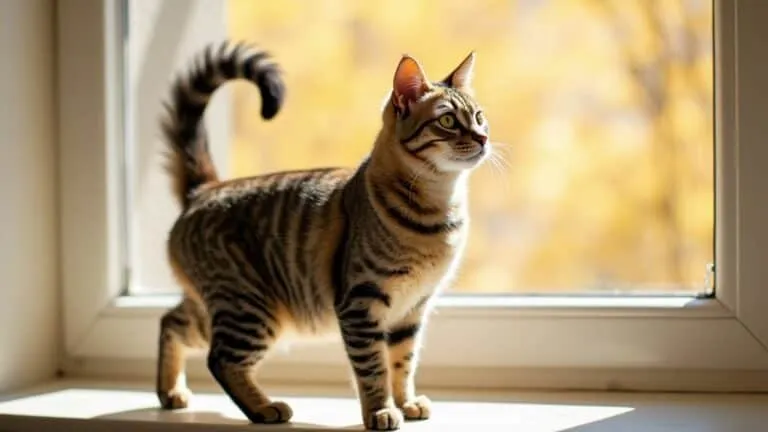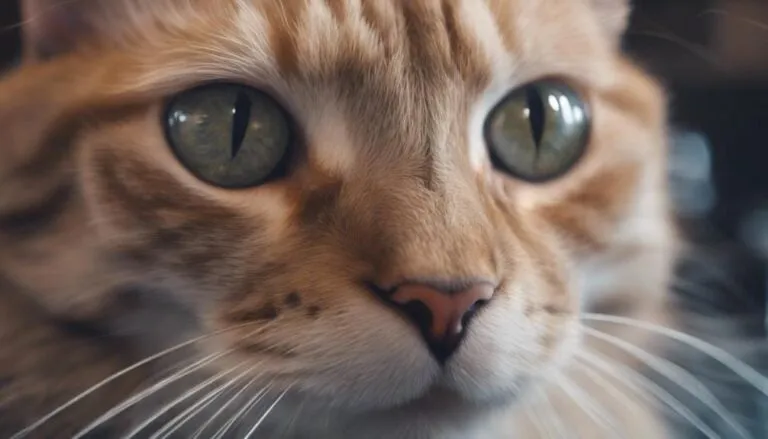The Best Fluffy Pancakes recipe you will fall in love with. Full of tips and tricks to help you make the best pancakes.

Imagine a world where the unpleasant task of cat litter disposal becomes a breeze. No more guessing or trial and error – just a clear understanding of the best methods available to you.
In this comprehensive guide, we will walk you through the various options for disposing of your cat's litter, offering insights and recommendations along the way.
From the simple and straightforward to the more innovative and eco-friendly approaches, we've got you covered.
So, if you're ready to take the hassle out of cat litter disposal and discover the ultimate solutions, let's dive in.
Key Takeaways
- Use biodegradable or compostable bags to reduce environmental impact when disposing of cat litter.
- Composting cat litter can be done with certain types, but it should not be used on edible plants or vegetable gardens.
- Vermicomposting with worms is another option for breaking down some types of cat litter.
- Check local regulations for green waste bins that may allow for proper disposal of biodegradable cat litter. Avoid flushing cat litter to prevent plumbing issues and water pollution.
Bag and Bin It
To properly dispose of cat litter, the most convenient and environmentally responsible method is to bag it and place it in your garbage bin. This method ensures proper waste management and reduces the environmental impact of cat litter.
Start by using biodegradable or compostable bags to minimize the amount of plastic waste. Scoop the soiled litter into the bag and tie it securely to prevent any leakage or odor.
Make sure to place the bag in your garbage bin and dispose of it properly.
Compost It (With Caution)
When considering composting cat litter, it's important to proceed with caution and make informed choices to ensure the safety and effectiveness of the process.
There are considerations for composting cat litter that you should keep in mind.
First, it's crucial to use the right type of litter. Some types, like sawdust or wood shavings, can be composted.
Second, create a separate compost pile specifically for pet waste. However, it's important to note that this compost shouldn't be used on edible plants or vegetable gardens. It's best suited for ornamental plants or flower beds.
If you want to take it a step further, you can try utilizing vermicomposting for cat waste. This method uses worms to break down organic waste, including some types of cat litter. Set up a separate worm bin with bedding and food scraps, and add the soiled, biodegradable litter to the bin.
Just remember not to use this compost on anything intended for consumption.
Try Vermicomposting
Consider vermicomposting as a sustainable method for disposing of your cat litter. Vermicomposting uses worms to break down organic waste, including some types of cat litter. It offers several benefits.
First, it reduces waste going to landfills, contributing to a healthier environment.
Second, the resulting compost can be used to nourish your ornamental plants or flower beds.
However, vermicomposting also comes with challenges. It requires setting up a separate worm bin with bedding and food scraps. Moreover, not all types of cat litter are suitable for vermicomposting, especially those containing chemicals or synthetic materials.
Additionally, the compost produced shouldn't be used on anything intended for consumption.
With proper knowledge and care, vermicomposting can be an effective way to dispose of cat litter while minimizing environmental impact.
Look for a Green Waste Bin
Look for a green waste bin in your community as a convenient and eco-friendly option for disposing of compostable cat litter.
Green waste bins are specifically designed to handle organic waste, and they provide several benefits.
Firstly, using a green waste bin helps divert cat litter from ending up in landfills, reducing the environmental impact.
Secondly, composting cat litter in a green waste bin allows for the breakdown of organic materials, creating nutrient-rich compost that can be used in gardens and landscaping.
Additionally, green waste bins are often collected separately from regular trash, ensuring that the compostable cat litter is properly processed.
If a green waste bin isn't available in your community, there are alternatives to consider, such as bagging and throwing away the litter or exploring composting methods like vermiculture.
Why You Should Never Flush Used Cat Litter
Flushing used cat litter isn't recommended due to the potential plumbing issues and environmental consequences it can cause. When you flush cat litter down the toilet, you risk clogging your pipes. Clumping clay litter, in particular, is highly absorbent and can easily create blockages. Even if you're using a flushable litter, it may not break down fully and can still cause plumbing problems.
Moreover, flushing cat litter introduces bacteria and parasites to waterways, which can harm aquatic life and pollute water sources. To avoid these issues, it's best to explore alternative methods of disposal. Bagging and throwing away the used litter is the easiest and most convenient option. Composting certain types of biodegradable litter, such as sawdust or wood shavings, is another possibility, but be cautious and avoid using the compost on edible plants or vegetable gardens. Vermicomposting, which utilizes worms to break down organic waste, can also be effective for some types of cat litter. Finally, you can check if your community offers green waste bins for compostable materials.
Be mindful of local regulations and dispose of the litter accordingly, as flushing should be avoided for both plumbing and environmental reasons.
Proper Disposal of Biodegradable Litter
To properly dispose of biodegradable cat litter, it's important to explore alternative methods that are both environmentally conscious and practical, avoiding the potential plumbing issues and harmful effects on waterways associated with flushing used litter. Here are some eco-friendly alternatives for disposing of biodegradable cat litter:
- Bag and Bin It: Scoop the soiled litter into a biodegradable bag, securely tie it, and place it in your garbage bin.
- Compost It (With Caution): Some types of cat litter, like sawdust or wood shavings, can be composted. Create a separate compost pile for pet waste, but avoid using this compost on edible plants.
- Try Vermicomposting: Set up a separate worm bin with bedding and food scraps. Add the soiled, biodegradable litter to the worm bin and let the worms break it down. Don't use this compost on anything intended for consumption.
- Look for a Green Waste Bin: Check if your community offers green waste bins for compostable materials. Dispose of your biodegradable cat litter according to local guidelines.
Considerations for Composting Cat Litter
When composting cat litter, there are important considerations to keep in mind to ensure the process is safe and effective. Composting cat litter has several benefits, including reducing waste and creating nutrient-rich compost for your garden.
However, not all cat litter is suitable for composting. Clay-based litters, for example, should never be composted as they don't break down properly. Instead, consider using biodegradable cat litter made from materials like sawdust or wood shavings, which can be composted safely.
If composting isn't an option for you, there are alternatives to consider. One alternative is using biodegradable bags to dispose of the cat litter in the regular garbage. Another option is vermicomposting, which uses worms to break down organic waste, including some types of cat litter.
Whichever method you choose, always be mindful of local regulations and avoid flushing cat litter, as it can cause plumbing issues and harm the environment.
Utilizing Vermicomposting for Cat Waste
If composting cat litter isn't an option for you, an alternative method to consider for disposing of cat waste is vermicomposting. Vermicomposting is a process that utilizes worms to break down organic waste, including certain types of cat litter. Here are some key benefits of vermicomposting and the types of worms commonly used:
- Benefits of Vermicomposting:
- Reduces waste sent to landfills
- Produces nutrient-rich compost for non-edible plants
- Helps improve soil structure and fertility
- Environmentally friendly alternative to traditional waste disposal methods
- Types of Worms Used in Vermicomposting:
- Red Wigglers (Eisenia fetida): Most commonly used worms for vermicomposting due to their ability to process large amounts of organic waste.
- European Nightcrawlers (Eisenia hortensis): Preferred for larger-scale vermicomposting projects as they can tolerate a wider range of temperatures.
- African Nightcrawlers (Eudrilus eugeniae): Thrive in warmer climates and are known for their rapid composting abilities.
- Blueworms (Perionyx excavatus): Suitable for vermicomposting in tropical regions and can tolerate high moisture levels.
Local Regulations and Cat Litter Disposal
Local regulations play a crucial role in guiding the proper disposal of cat litter. It's important to be aware of the rules and guidelines in your area to ensure you're disposing of cat litter in an environmentally responsible manner.
Some communities offer green waste bins specifically for compostable materials, so it's worth checking if you can use these for your biodegradable cat litter. Additionally, using biodegradable or compostable bags to scoop and dispose of the soiled litter can help reduce the environmental impact.
Avoid flushing cat litter down the toilet as it can cause plumbing issues and introduce harmful bacteria and parasites to waterways.
Frequently Asked Questions
Can I Use Regular Plastic Bags to Dispose of Cat Litter?
No, regular plastic bags are not recommended for disposing of cat litter. Instead, use biodegradable or compostable bags to minimize environmental impact. This is one of the eco-friendly cat litter options you should consider.
Is It Safe to Use Cat Litter Compost on My Vegetable Garden?
Using cat litter compost on your vegetable garden can have benefits such as nutrient enrichment. However, there are potential risks, including the presence of parasites and bacteria. It is best to exercise caution and avoid using it on edible plants.
How Long Does It Take for Worms to Break Down Cat Litter in a Vermicomposting Bin?
In a vermicomposting bin, it can take several weeks for worms to break down cat litter. However, the benefits of vermicomposting, such as reducing waste and creating nutrient-rich compost, make it a great alternative to traditional cat litter disposal methods.
Are There Any Specific Guidelines for Disposing of Cat Litter in Green Waste Bins?
To dispose of cat litter in green waste bins, check your local regulations. If your cat litter is biodegradable, it may be accepted. Be mindful of guidelines to ensure proper disposal. Consider alternative methods of cat litter disposal, such as bagging and throwing away or composting.
Can I Flush Cat Litter if It Is Labeled as Flushable?
No, you should never flush cat litter, even if it's labeled as flushable. Flushing can cause plumbing issues and harm the environment. Bagging and throwing away the litter is the safest and easiest method of disposal.
Conclusion
In conclusion, when it comes to cat litter disposal, there are several options available to you.
From bagging and binning it to composting and vermicomposting, you can choose the method that suits you best.
Remember, it's important to follow local regulations and guidelines to ensure responsible and efficient disposal.
So, don't let the cat out of the bag, explore these options and find the purr-fect way to handle your cat's litter.
Happy disposing!








